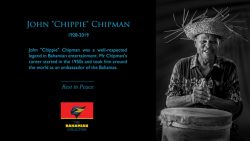In the Bahamas 9.3 per cent of the population live below the poverty line.
Social Services Minister Melanie Griffin made the announcement yesterday while outlining to the House of Assembly results of the Bahamas Living Conditions Survey.
The report establishes for_ the first time a poverty line in the Bahamas – the minimum amount of money needed for an individual to satisfy basic needs over a specific period of time.
The poverty rate is slightly lower in New Providence and Grand Bahama but significantly higher in other islands, with the highest found in the southern islands – 21 per cent.
Mrs Griffin said it should be noted, however, that notwithstanding this – given the distribution of the population – 76 per cent of all poor people live in New Providence and Grand Bahama.
It was also found that nearly 75 per cent of poor households have five or more members, 45 per cent of all poor households are headed by single female parents and children 14 years and younger comprise 50 per cent of the nation’s poor.
The standard of living varies greatly among nationalities, with Haitians faring worst of immigrant groups.
In comparison, according to the March 2001 issue of Finance and Development – the quarterly magazine of the International Monetary Fund – 36 per cent of the population in Latin America and the Caribbean lives below the poverty line – the same proportion as a decade before.
The Bahamas Living Conditions Survey – commissioned in 2001- determined that the minimum amount of money needed to buy an adequate low-cost diet with allowances for nonfood needs in the Bahamas was estimated as $7.84 per person per day, which translates into an annual income of $2,863 per person.
The minister said the cost is estimated in two stages: the first takes into account the minimum expenditure needed to buy a nutritionally adequate diet while the second considers the minimum required cost of non-food items like clothing and shelter. The sum of these two estimates equals the poverty line.
The report is a first for the Bahamas and provides information on household expenditure, food and non-food items, use of health facilities and social programmes and general characteristics of the population. It is intended to provide a general picture of conditions under which Bahamians live and in particular the aim was to produce a poverty line with which to estimate the proportion of populations or households unable to afford basic necessities for living.
“The findings should prove to be a useful tool for the development of socio-economic policies,” said Mrs Griffin.
The survey spanned late 2001 and early 2002 when all of the field work was completed.
The survey was commissioned to provide a general overview of living conditions in the Bahamas and focused on eight inter-related issues – demography, migration, poverty, household expenditures, health, education, employment, access to community services, social programmes and housing.
More than 2000 households were randomly selected throughout the country to participate in the survey.
Source: Rubert Missick Jr, The Tribune



